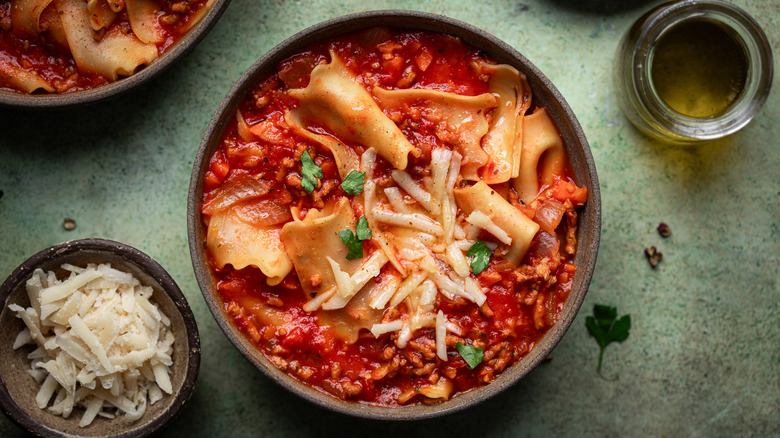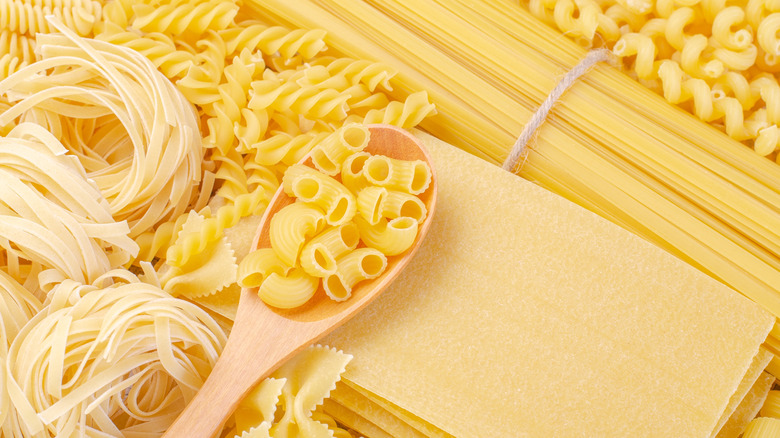You Can Use Different Noodles In Lasagna Soup (We Won't Tell Anyone)
Lasagna soup has everything you could dream of — tangy tomatoes, starchy pasta, herbaceous hints of basil, and cheesy goodness. While the classic dish is always made with tomato broth, a three-cheese blend of ricotta mozzarella and parmesan, and lasagna noodles (the wide, flat, sheet pasta with ruffled edges), the soup's creative twist gives a little leeway when it comes to choosing the noodles — especially if you want to make it in a pinch. The beauty of this dish is you can typically make it in under 30 minutes, whereas making a traditional lasagna can take almost two hours, so instead of complicating things with a trip to the store for lasagna noodles, you can simply use a different shape you already have in your pantry to get the job done.
Since most pasta has the same underlying flavor — they're typically made using identical ingredients (durum wheat and water) — you can definitely lean on other pasta shapes (think shells or ditalini) in hearty lasagna soup. However, you should know that the texture and shape will significantly impact how each pasta complements the sauce in your dish. For example, shorter, tube-shaped noodles tend to hold up better in meat-based, thicker broths, whereas thinner noodles, like egg noodles, pair better with light broths.
How to choose a different pasta shape for lasagna soup
The good news is that there are plenty of worthy swaps for the hearty lasagna noodle in this soup recipe. Elbow noodles function well in soup because the openings can flood with the broth. The same principle applies to ditalini, another type of short-tube pasta variety. Small or large shells allow the tomato broth and meat to sit in the hollow cup of the noodle's shape for a serving of the meat and broth in every bite. Orecchiette is a pasta about 3/4-inches in size with textured ridges on its exterior, which helps catch bits of veggies and meat in the soup.
Or you could swap the pasta for rigatoni, which can turn it into baked ziti-inspired soup. In addition to using different textures, try incorporating an artisanal-flavored pasta to impart more savory flavors. Roasted garlic and basil pasta, for example, will complement and reinforce the existing aromatic flavors in the dish.


